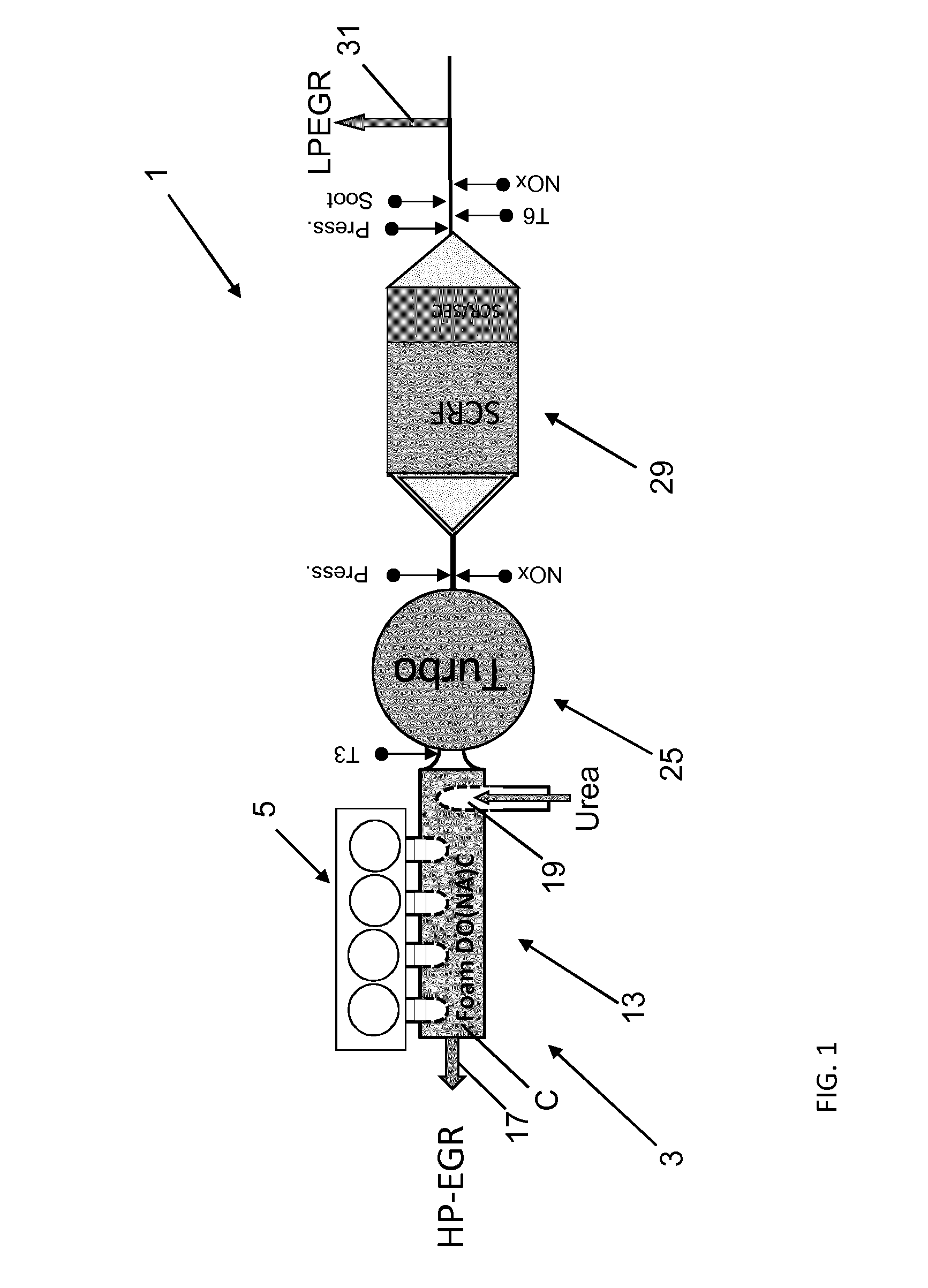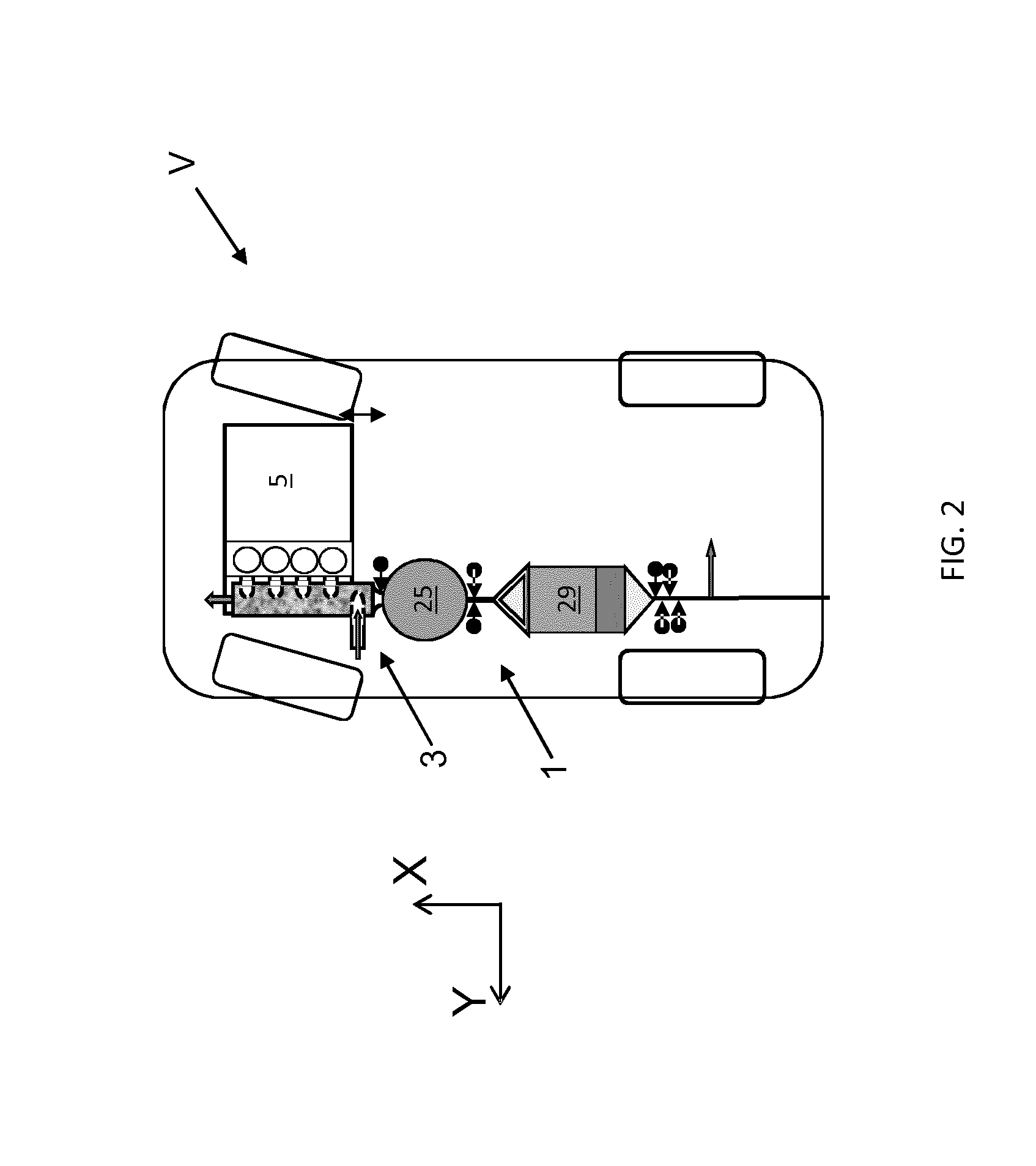Exhaust treatment apparatus and method
a technology of exhaust treatment and exhaust system, which is applied in the direction of exhaust treatment, mechanical equipment, engine components, etc., can solve the problems of increasing the thermal inertia affecting the operation of the exhaust system, and reducing the operation temperature of the catalyst, so as to reduce the catalyst light-off time, facilitate evaporation and mixing through the turbocharger, and facilitate the coupling of downstream aftertreatment devices
- Summary
- Abstract
- Description
- Claims
- Application Information
AI Technical Summary
Benefits of technology
Problems solved by technology
Method used
Image
Examples
Embodiment Construction
[0066]A schematic representation of an exhaust aftertreatment apparatus 1 incorporating a pre-turbocharger diesel oxidation catalyst (DOC) 3 in accordance with an embodiment of the present invention is shown in FIG. 1. The DOC 3 according to the present invention is intended for use in an automotive vehicle V having a compression-ignition (diesel) engine 5, as shown schematically in FIG. 2. A cylinder head 7 of the engine 5 is shown schematically in FIG. 3.
[0067]The engine 5 in the present embodiment comprises four (4) cylinders 9A-D each having an exhaust outlet (not shown). The exhaust outlets are coupled to respective exhaust gas inlets 11A-D of an exhaust manifold 13 by conduits 15A-D. The exhaust gas inlets 11A-D open into a catalyst chamber C defined by the exhaust manifold 13. The exhaust manifold 13 also comprises a high pressure return line 17, a reductant injection nozzle 19 and an outlet port 21. The high-pressure return line 17 recirculates high-pressure exhaust gases to...
PUM
 Login to View More
Login to View More Abstract
Description
Claims
Application Information
 Login to View More
Login to View More - R&D
- Intellectual Property
- Life Sciences
- Materials
- Tech Scout
- Unparalleled Data Quality
- Higher Quality Content
- 60% Fewer Hallucinations
Browse by: Latest US Patents, China's latest patents, Technical Efficacy Thesaurus, Application Domain, Technology Topic, Popular Technical Reports.
© 2025 PatSnap. All rights reserved.Legal|Privacy policy|Modern Slavery Act Transparency Statement|Sitemap|About US| Contact US: help@patsnap.com



